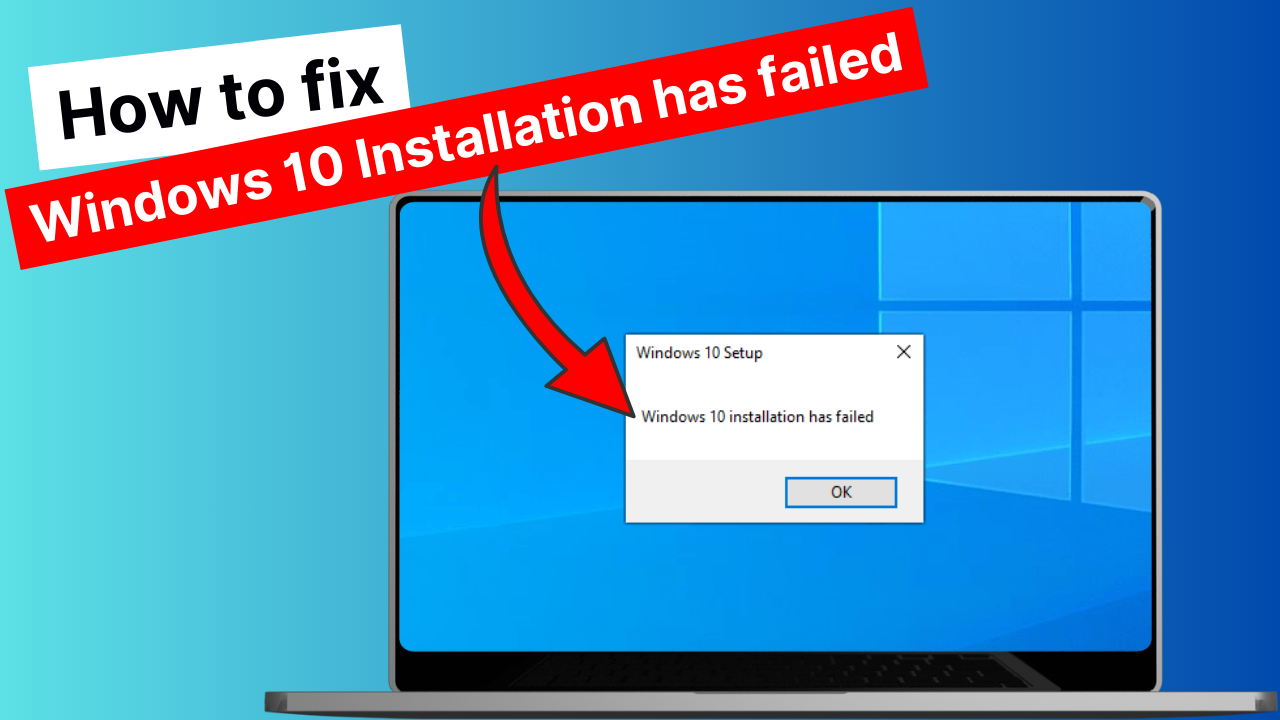The “Windows 10 installation has failed” error can occur due to various reasons. These reasons include corrupted installation files, incompatible hardware, or software conflicts. Here’s a step-by-step guide to troubleshoot and fix the issue:

1. Check System Requirements
Ensure your PC meets the minimum requirements for Windows 10:
- 1 GHz processor
- 1 GB of RAM (32-bit) or 2 GB (64-bit)
- 16 GB of free storage (32-bit) or 20 GB (64-bit)
2. Run Windows Update Troubleshooter
- Go to Settings > Update & Security > Troubleshoot > Windows Update.
- Run the troubleshooter and let it fix any issues.
3. Disconnect Peripherals
Unplug all unnecessary external devices. These include printers, USB drives, or external hard drives. They might interfere with the installation.
4. Free Up Disk Space
Ensure you have enough free disk space for the installation. Delete temporary files and unnecessary data if needed:
- Open Disk Cleanup by searching for it in the Start menu.
- Select the drive where Windows is installed and clean up system files.
5. Disable Antivirus and Firewall
Temporarily disable third-party antivirus software and the Windows Firewall:
- Antivirus: Right-click the antivirus icon in the taskbar and disable it.
- Windows Firewall: Go to Control Panel > Windows Defender Firewall > Turn Windows Defender Firewall on or off.
6. Update Drivers
Outdated or incompatible drivers can cause installation errors. Update your drivers:
- Right-click Start > Device Manager.
- Check for any devices with a yellow warning icon and update their drivers.
7. Reset the Windows Update Components
Run the following commands in an elevated Command Prompt (search for “cmd,” right-click, and select “Run as administrator”):

This resets the update components.
8. Use the Media Creation Tool
- Download the Media Creation Tool.
- Run the tool, select Upgrade this PC now, and follow the instructions.
9. Perform a Clean Boot
Conflicting programs might prevent the installation. Perform a clean boot:
- Press Win + R, type
msconfig, and press Enter. - Go to the Services tab, check Hide all Microsoft services, and click Disable all.
- Go to the Startup tab, click Open Task Manager, and disable all startup items.
- Restart your PC and try the installation again.
10. Check Installation Logs
If the issue persists, check the installation logs for more information:
- Open File Explorer and navigate to
C:\$WINDOWS.~BT\Sources\Panther. - Look for files like
setuperr.logorsetupact.logfor error details.
11. Perform a Clean Installation
As a last resort, perform a clean installation:
- Back up all your data.
- Create a bootable USB using the Media Creation Tool.
- Boot from the USB and follow the on-screen instructions for a clean install.
Detailed video below:
If the issue persists after trying these steps, let me know the specific error code or message for further assistance! (Contact US)


